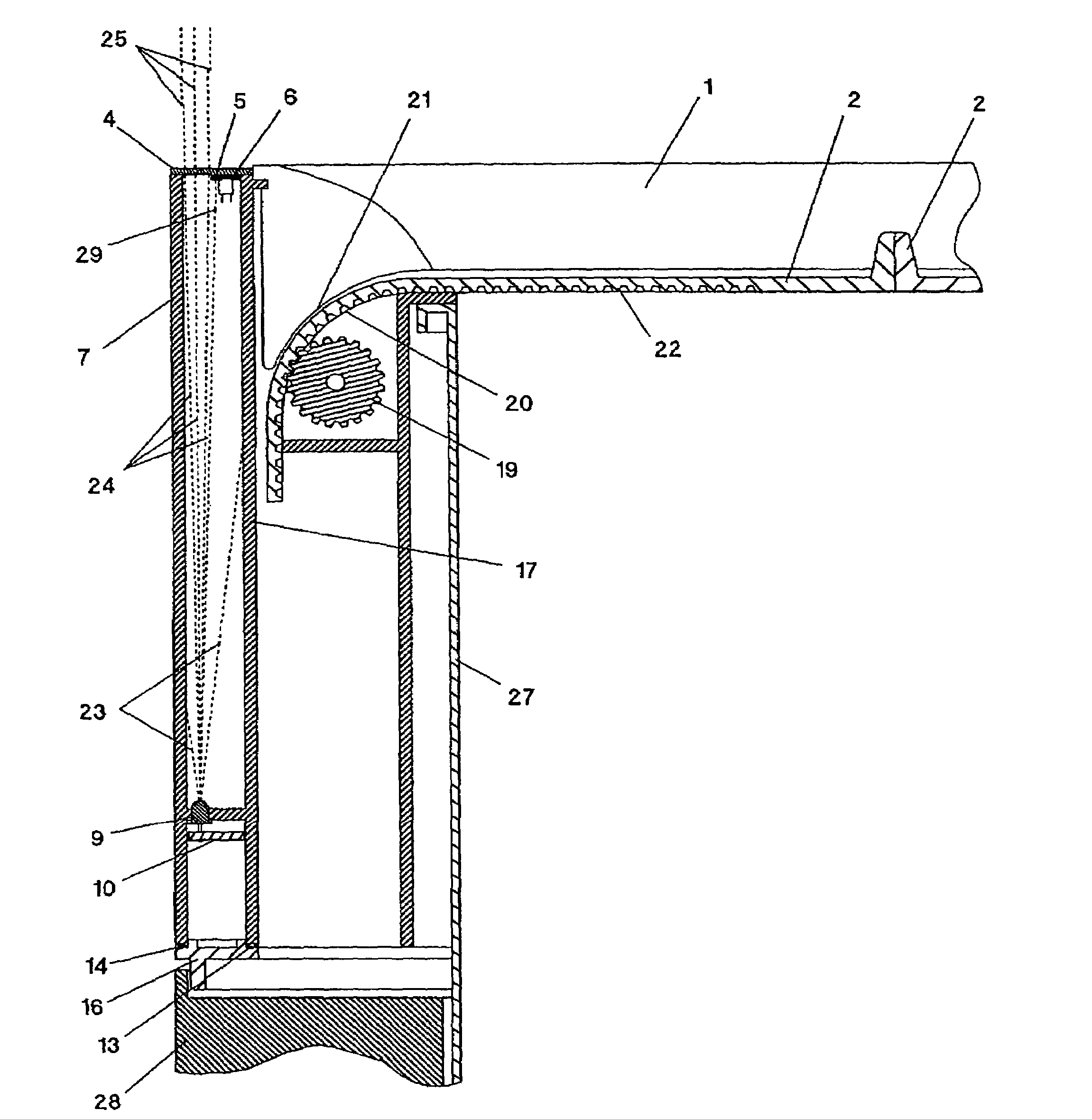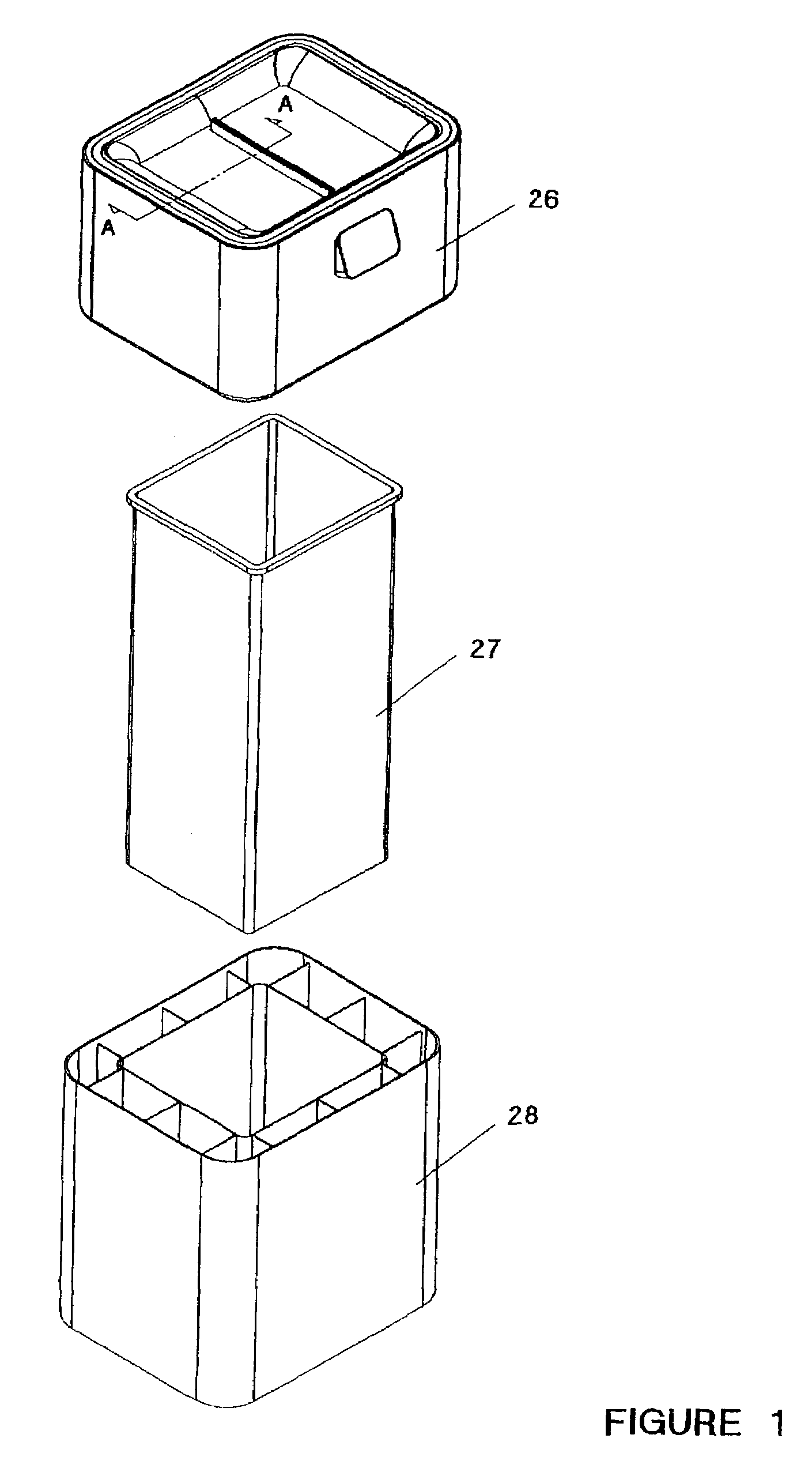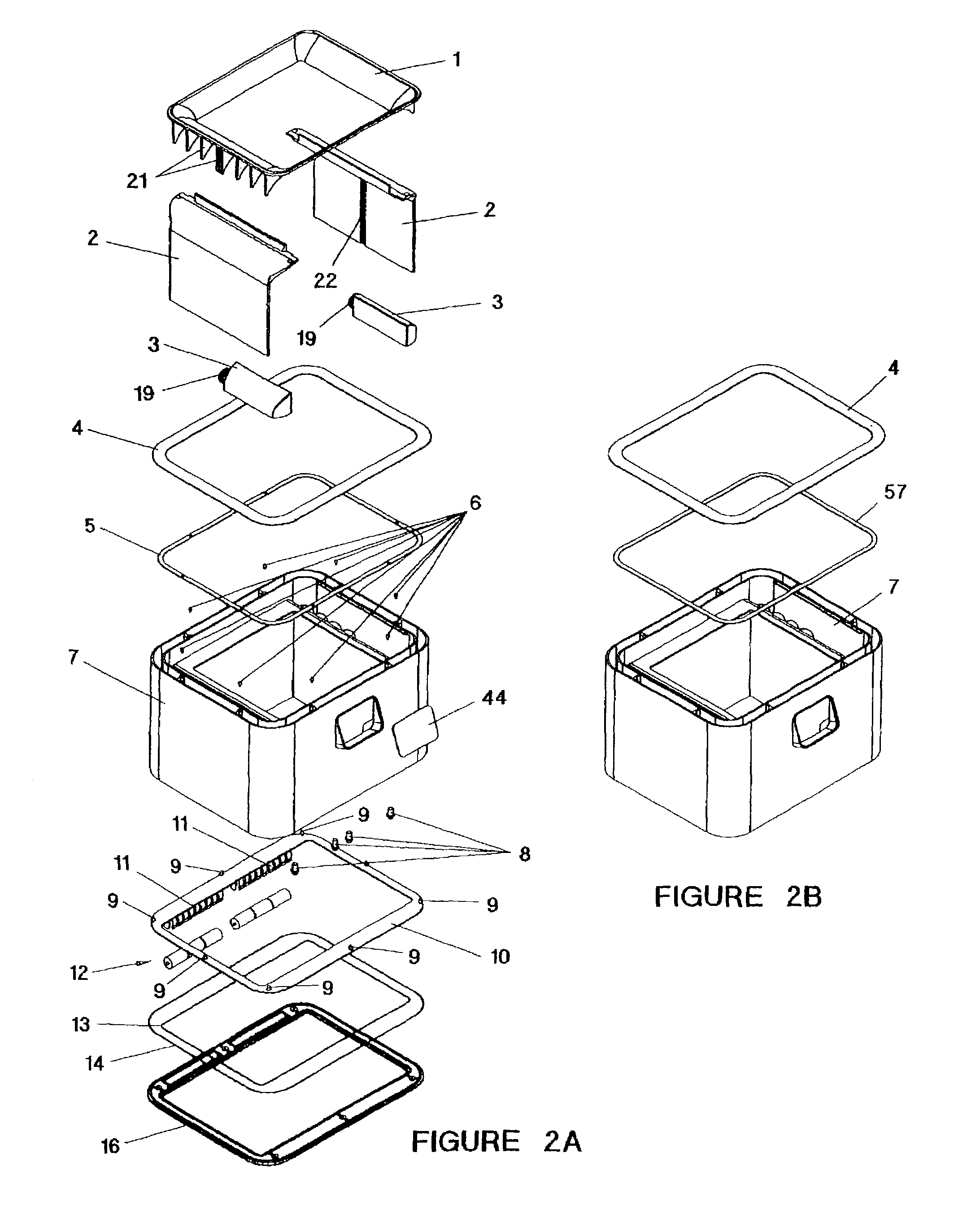Perimetric detection system
a detection system and perimetric technology, applied in the field of perimetric detection systems, can solve the problems of inconvenient use, easy false alarms from passing objects or persons, inconvenient or bothersome use, etc., and achieve the effects of minimizing system complexity and volume of space required for operation, avoiding the effect of affecting the accuracy of detection results, and reducing the complexity of the system
- Summary
- Abstract
- Description
- Claims
- Application Information
AI Technical Summary
Benefits of technology
Problems solved by technology
Method used
Image
Examples
Embodiment Construction
[0066]FIG. 1 shows an exploded view of one embodiment of an automatic waste container utilizing the detection system of the present invention. A receptacle 27 for containing discarded refuse is fitted to a support base 28. The housing module 26 is placed over the rim of the receptacle 27, thereby covering the opening of the receptacle 27. The housing module 26 covers a substantial portion of the upper sidewalls of the receptacle 27, and so also serves to cover the exposed upper portions of a disposable plastic bag, of the type that may be used to line waste container interiors.
[0067]FIG. 2A shows an exploded view of the housing module 26. The main structural component is the housing 7. The housing 7 is a plastic, injection-molded part, as are the other structural components, bezel 1 and bottom cover 16. The walls and ribs of the housing 7 create multiple interior spaces. Eight of the interior spaces circumvent the opening of the housing 7, which is situated directly above the openin...
PUM
 Login to View More
Login to View More Abstract
Description
Claims
Application Information
 Login to View More
Login to View More - R&D
- Intellectual Property
- Life Sciences
- Materials
- Tech Scout
- Unparalleled Data Quality
- Higher Quality Content
- 60% Fewer Hallucinations
Browse by: Latest US Patents, China's latest patents, Technical Efficacy Thesaurus, Application Domain, Technology Topic, Popular Technical Reports.
© 2025 PatSnap. All rights reserved.Legal|Privacy policy|Modern Slavery Act Transparency Statement|Sitemap|About US| Contact US: help@patsnap.com



